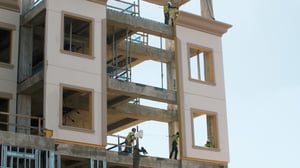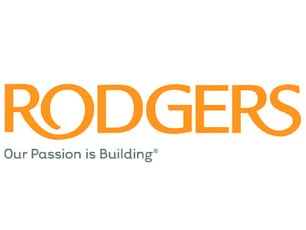4 Advantages of Automation in Construction
When it comes to what industries have embraced digitalization, construction falls at the bottom. On one hand, it’s because of the way the job gets done. On the other hand, it’s because of the culture. Though factors like cost and availability of products made specifically for construction are part of the equation, the industry is pretty hesitant to buy in. “If it ain’t broke, don’t fix it” is a common philosophy. However, there are plenty of areas of construction that are broken. But automation and artificial intelligence are fixing that. And fortunately, a culture shift is happening. General contractors are embracing emerging construction technologies and noting the benefits these technologies bring.
What is Automation in Construction?
Simply put, automation is using a machine to perform a task or process that was once done manually.
The most widely known example of automation in industry is the use of robotics in car building. General Motors have utilized robots to build cars since the 1960s. In construction, drones, data software, and prefab and modular building—which are increasingly becoming more popular—are examples of automation in construction.
Takeoff software is a form of automation. Can you imagine performing takeoff by hand? For those of you who remember, would you ever go back to the old way of doing things?
We didn’t think so.
What is Artificial Intelligence?
Artificial intelligence or A.I. is the use of computers and databases to solve problems and make decisions. IBM defines A.I. as, “At its simplest form, artificial intelligence is a field, which combines computer science and robust datasets, to enable problem-solving. These disciplines are comprised of AI algorithms which seek to create expert systems which make predictions or classifications based on input data.”
We all use A.I. every day. Examples include Siri, Alexa, chatbots, Netflix and other streaming entertainment services, YouTube, GPS systems, and social media.
Your company most likely also uses A.I. every day. More than 80% of the country’s general contractors use BIM—an A.I. program.
Don’t Worry. The Robots Aren’t Taking Over
Unlike manufacturing, many construction jobs can’t be replaced by automation…not now anyway. Automation is best used for repetitive tasks and though it may feel like you do the same thing over and over again, the construction site is unpredictable and most workers on a job can’t be replaced by a robot.
However, those tasks that can be automated come with a high return on investment.
The advantages of automation in construction are:
- Increased production efficiency
- Mitigating labor shortages
- Fewer change orders and cost overruns
- Attracts owners
Software
.png?width=500&name=estimator%20(1).png)
Data aggregation software like DESTINI Estimator estimating software, and Togal.AI takeoff software help preconstruction teams save time and make better, more informed project decisions. When estimators are pulling data from multiple locations and piecing it together in an Excel spreadsheet, there is a high chance of error. Construction software, whether it be estimating, takeoff, or project management makes the build process more efficient.
Click here to learn more about Togal.AI.
When historical cost data is analyzed and conceptual estimates are accurate, there are fewer change orders, cost overruns, and delays. Plus, estimators have the time to value engineer a project, delivering owners a higher value when bidding on a project. Autodesk writes, “…bad data—which is inaccurate, incomplete, or inconsistent—is estimated to have cost the global construction industry $1.85 trillion in 2020 alone.”
Offsite Modular and Prefabrication
 Offsite modular construction benefits are three-fold when it comes to the advantages of automation. Modular construction mitigates labor shortages, increases productivity, and makes owners happy. An Associated General Contractors of America (AGC), ABB Robotics, and Autodesk survey found that 80% of GCs have a difficult time finding workers.
Offsite modular construction benefits are three-fold when it comes to the advantages of automation. Modular construction mitigates labor shortages, increases productivity, and makes owners happy. An Associated General Contractors of America (AGC), ABB Robotics, and Autodesk survey found that 80% of GCs have a difficult time finding workers.
When DESTINI Estimator user Brasfield & Gorrie chose prefab for its HCA Florida University Hospital project, it shifted 26,708-man hours offsite, improved the project schedule, and saved 25% in MEP installation.
Owners want builders who provide innovative and forward-thinking solutions and materials. From research conducted by Building Design & Construction, it was found that “…owners actively seek out new ideas and lean toward AEC firms that lead them to cutting-edge products, innovations, and delivery methods, especially those whose return on investment is evident and measurable. Solutions with cost control baked into them are more likely to attract owners’ attention.” This same study also revealed that owners prefer GCs that offer greener and environmentally-conscience practices and building materials.
Drones and Laser Scanning
Drones and laser scanning give estimators a better look at a job site than any technology before and eliminate multiple onsite visits. Utilizing new photography, videography, and laser technology allow you to quickly assess where setbacks will be in the design plans and will help you make better project decisions. Many change orders and delays are the results of unknown environmental factors on a job site. This type of automation prevents that.
The more accurate information you can collect faster creates a more efficient process throughout the lifecycle of the project.
Andy Leek, VDC Director at PARIC Corporation, which uses drones and laser scanning technology says, “PARIC’s preconstruction services are very focused on understanding the constraint of the project upfront. Providing that context to the project team upfront. Becoming partners with our designers upfront. And giving them all the data we have.”
Click here to read more on how PARIC uses technology to gather contextual data.
What Does the Future Hold?
Of course, this isn’t even the tip of the iceberg when it comes to automation and A.I. in construction. There are so many different technologies left to explore and it appears that the trend to welcome the digital age is just beginning. In the AGC and ABB Robotics, 81% of GCs responded that they will implement automation in their business in the next decade.
Clearly, this isn’t just a trend. Contractors that are taking advantage of revolutionary technologies are reaping the benefits and seeing proof of their return on investment. We’re building more efficiently. We’re building safer. We’re building greener. We’re making the world a better place.
If you are ready to explore how to standardize your precon process, become better at your job, and create an accurate and defendable estimate, ask for your free demo now!

-1.png?width=112&height=112&name=image%20(4)-1.png)














